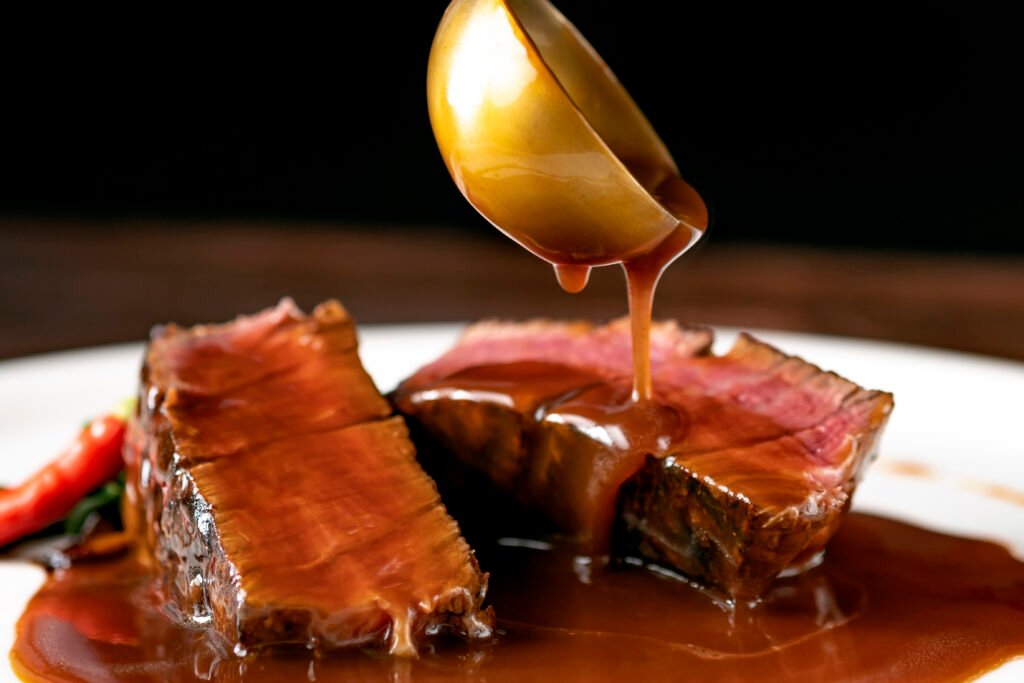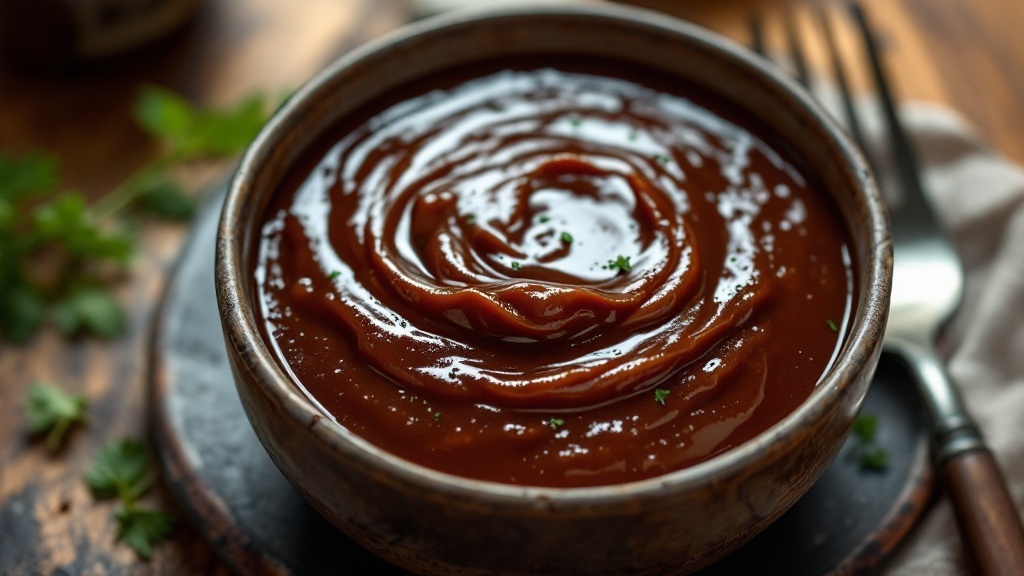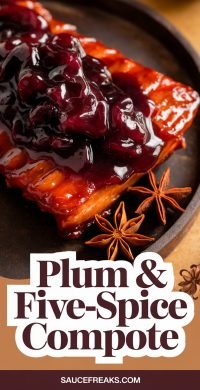Classic Espagnole Sauce: A Rich Brown Sauce for Demi-Glace

Espagnole sauce, often referred to as brown sauce, is one of the five mother sauces in classical French cuisine. This robust sauce is the backbone of many rich dishes, especially perfect for red meats. If you’re looking to elevate your culinary creations, mastering this sauce is essential. It’s a versatile addition that can enhance the flavor profile of your dishes with its deep, savory notes.
Creating a delicious Espagnole sauce might seem intimidating, but with a few simple steps, you can achieve that restaurant-quality taste right in your kitchen. This sauce is not just about complexity; it’s about creating a foundation that can carry a multitude of flavors. Whether you’re pouring it over a perfectly cooked steak or using it as a base for a demi-glace, this sauce will impress your guests.
Incorporating this sauce into your repertoire means you can elevate everyday meals into gourmet experiences. The rich, velvety texture and deep flavor make it an indispensable component for sauces and gravies that will have everyone asking for seconds.
Understanding Espagnole Sauce
Espagnole sauce, also known as brown sauce, is a fundamental component of classic French cooking. This robust sauce serves as a base for many dishes, particularly those featuring red meats.
The complexity and depth of flavor found in Espagnole make it an important element for chefs striving to create rich culinary experiences. It blends the savory notes of a dark roux with the sweetness of caramelized vegetables, resulting in a sauce that enhances the inherent flavors of meats beautifully.
Ingredients That Make a Difference
The foundation of Espagnole sauce lies in its ingredients. A combination of butter, flour, and a mix of mirepoix—onions, carrots, and celery—creates a deep flavor base.
Using high-quality beef or veal stock is crucial, as it contributes to the sauce’s richness. Additionally, the inclusion of tomato paste adds a slight acidity that balances the flavors, while aromatic herbs like bay leaves and thyme elevate the overall taste profile.
The Art of Creating Roux
Making a roux is the first step in crafting Espagnole sauce. This mixture of fat and flour is cooked over medium heat until it reaches a dark brown color, which is essential for developing the sauce’s complexity.
Achieving the perfect roux requires patience and attention, as it can transition from nicely browned to burnt quite quickly. This stage is critical, as the roux serves as the backbone for the sauce, influencing both its flavor and texture.
Sautéing for Depth of Flavor
After preparing the roux, the next step involves sautéing the diced vegetables. Onions, carrots, and celery are cooked until they become soft and caramelized, which adds a natural sweetness to the sauce.
The caramelization process not only contributes flavor but also enhances the color of the sauce, making it visually appealing. This step showcases the importance of technique in developing layers of flavor that define Espagnole sauce.
Simmering to Perfection
Once the roux and vegetables are combined, it’s time to incorporate the stock. Gradually whisking in the beef or veal stock helps to achieve a smooth consistency, preventing any lumps from forming.
As the sauce simmers, it thickens and the flavors meld together. This gradual cooking process allows the rich elements to shine and creates a sauce that’s ready to elevate your dish.
Finishing Touches
The final steps in preparing Espagnole sauce involve seasoning and straining. Adjusting the seasoning with salt and pepper enhances the flavors, ensuring a balanced taste.
Straining the sauce through a fine sieve is essential for achieving a velvety texture. This final touch transforms the sauce into a luxurious addition to your culinary repertoire, ready to enhance a variety of dishes.
Mastering Espagnole Sauce: The Heart of French Cuisine

Espagnole sauce is a deeply flavorful, brown sauce made from a dark roux, mirepoix, and rich stock. Its intense flavor profile is perfect for complementing red meats, making it a staple in fine dining and classic French cuisine.
This sauce has a rich, savory taste with hints of caramelized vegetables and a slight depth from the use of high-quality stock. Its complexity allows it to pair beautifully with a variety of meats, enhancing their natural flavors.
Ingredients
- 2 tablespoons butter
- 2 tablespoons all-purpose flour
- 1 medium onion, diced
- 1 medium carrot, diced
- 1 celery stalk, diced
- 1 cup beef or veal stock
- 1 tablespoon tomato paste
- 1 bay leaf
- 1 sprig of thyme
- Salt and pepper to taste
Instructions
- Make the Roux: In a saucepan, melt the butter over medium heat. Add the flour and whisk continuously until the mixture turns a dark brown color, about 5-7 minutes. This is your roux.
- Sauté the Vegetables: Add the diced onion, carrot, and celery to the roux. Cook until the vegetables are softened and caramelized, about 8-10 minutes.
- Combine Ingredients: Stir in the tomato paste, cooking for an additional 2 minutes. Gradually add the beef or veal stock while whisking to avoid lumps.
- Add Herbs and Simmer: Add the bay leaf and thyme. Bring the sauce to a simmer, then reduce the heat and let it cook for 30-45 minutes until thickened. Stir occasionally.
- Season and Strain: Remove from heat, season with salt and pepper to taste, and strain the sauce through a fine sieve to ensure a smooth texture.
Cook and Prep Times
- Prep Time: 10 minutes
- Cook Time: 45 minutes
- Total Time: 55 minutes
- Servings: 4 servings
- Calories: 150kcal
- Fat: 10g
- Protein: 4g
- Carbohydrates: 12g












Add comment